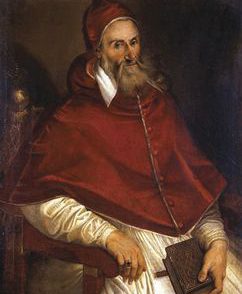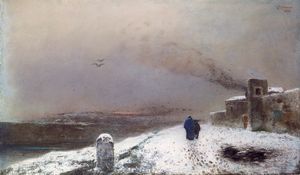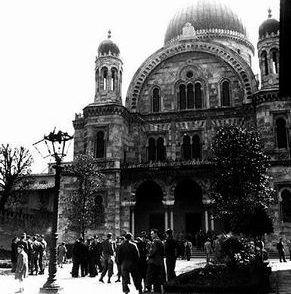Whenever we visit a major art gallery it is usually to have our prejudices confirmed. We rediscover our favourite works and artists and congratulate ourselves on our impeccable good taste. This is why a visit to the Uffizi’s free exhibition of works drawn from its reserve collection is such a rewarding and exciting experience.
You have little idea of what to expect. Unaided by guide books or the voice of an authority telling you what to admire, you are exposed to rarely exhibited works by forgotten or anonymous artists. You can look at each canvas with uncorrupted, innocent eyes.
There is so much to enjoy in this assembly of paintings loosely connected by the fact that each depicts an interior and therefore confronts the problem of perspective and the illumination of a confined space. Not surprisingly it is the Renaissance works that dominate in terms of luminosity and originality, and it was one of the latter that gave me most pleasure.
The painting in question is a small and modest canvas by an unknown artist of the Pisan School, depicting Saint Benedict handing over his rules to a newly founded order of followers—not the most exciting or enticing theme for a secular observer from the 21st century. Sixteen or so shaven-headed monks plus one embarrassed-looking nun gratefully receive a book of guidance from an enthroned Saint Benedict. What could be a more tedious subject, especially when the monks are all dressed in identical habits?
One secret of this miniature masterpiece is the architectural arches of the frame which form the protecting enclosing walls for this new, brave community. The monks are simultaneously individual and communal, swathed in a cloud of white, the living embodiment of Saint Augustine’s ‘City of God’. In this small painting, the achievement of the first monastic order is eloquently celebrated—the ‘word’ in written form is to be protected and in turn protect its protectors. Outside the frame of the monastery walls, darker forces consume what remains of the crumbling Roman world. The unknown artist acknowledges his debt to the monks of Saint Benedict. Perhaps the hand that painted this warm scene was that of a monk of the very same order. Here is a work that is both of and about the Renaissance spirit. It is a link or bridge from our hectic and superficial world via the Tuscan Renaissance to a time when Western civilization teetered on the brink of annihilation.
The exhibition closes on the 31st of January. Take this opportunity to stand in front of a canvas when, for those few moments of contemplation, the canvas belongs to you. This is an experience not to be missed and it is entirely and absolutely free.







